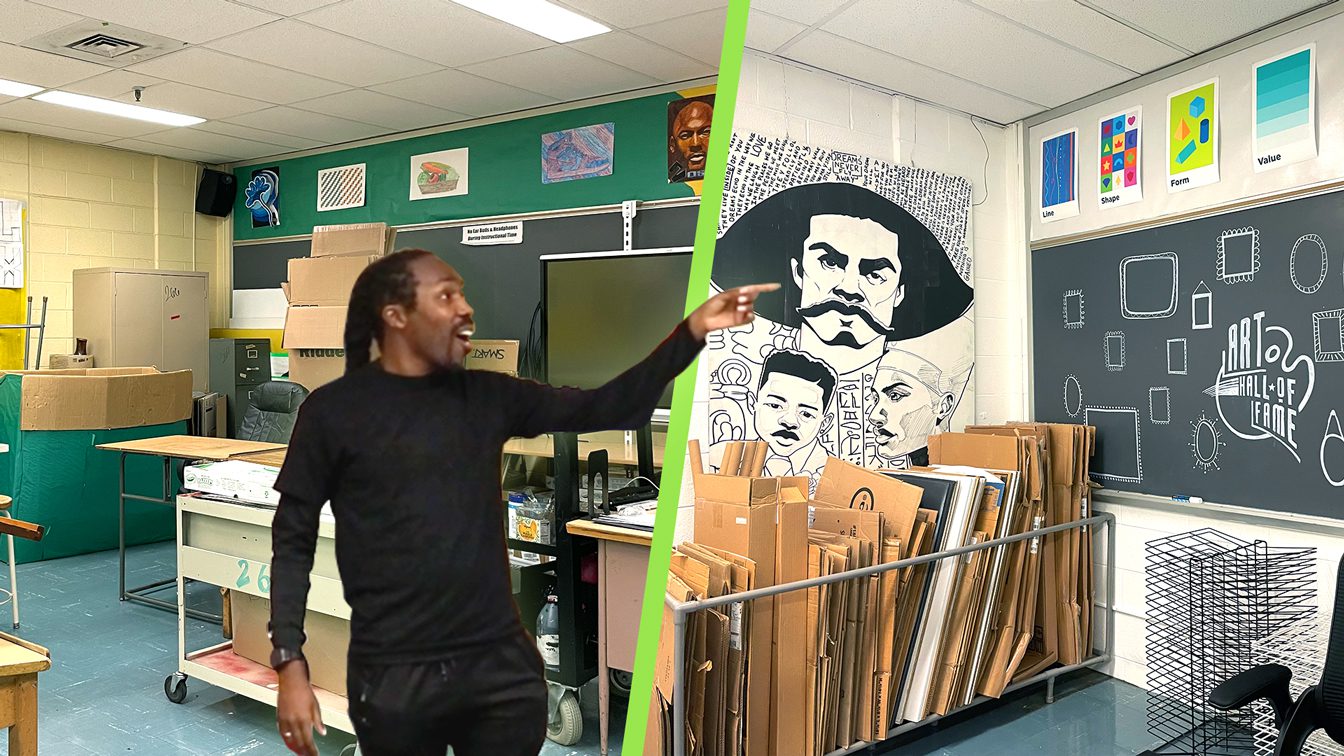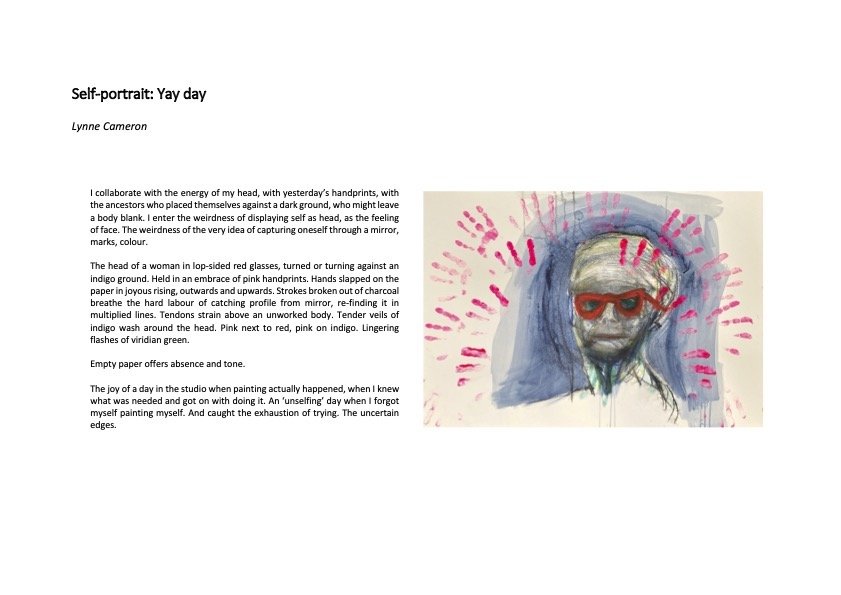Many of us inherited someone else’s art room… and someone else’s treasures. Piles of old artworks, interesting collections of still life objects, and boxes of archaic slides fill the shelves. You could definitely use the extra space but are you allowed to toss these items? Perhaps you’re the one who carefully curated the piles of art supplies in your art room. You blinked and now your space is overflowing. You need to reprioritize but would like an extra voice giving you permission to undo all of your efforts.
Let’s walk through eight simple guiding questions to determine what art supplies you can toss and what you should keep in your art closet.
Are you having trouble finding the motivation to tackle your messy art room? If you’re not sure how you’re going to make it to the end of these eight questions, pause and go binge-watch Art Room Makeover on YouTube. This short series will inspire you to channel your inner declutterer with a super satisfying and relatable art room cleanout and makeover.
https://www.youtube.com/watch?v=YgjyHYeVioE
Isn’t tossing wasteful?
Art teacher budgets are often very tight. The idea of throwing something away that you can use to make great art and stretch your budget may make you cringe! Don’t worry—there are several other ways to pass on art supplies without throwing them in the dumpster.
Here are five ways to be generous with your surplus:
- Donate to another art teacher in your building or district.
- Create a bin of “free” art supplies for students to take home.
- Gift to another colleague in your building.
- Drop off at your local arts council or community studio space.
- Post in your local buy-nothing group.
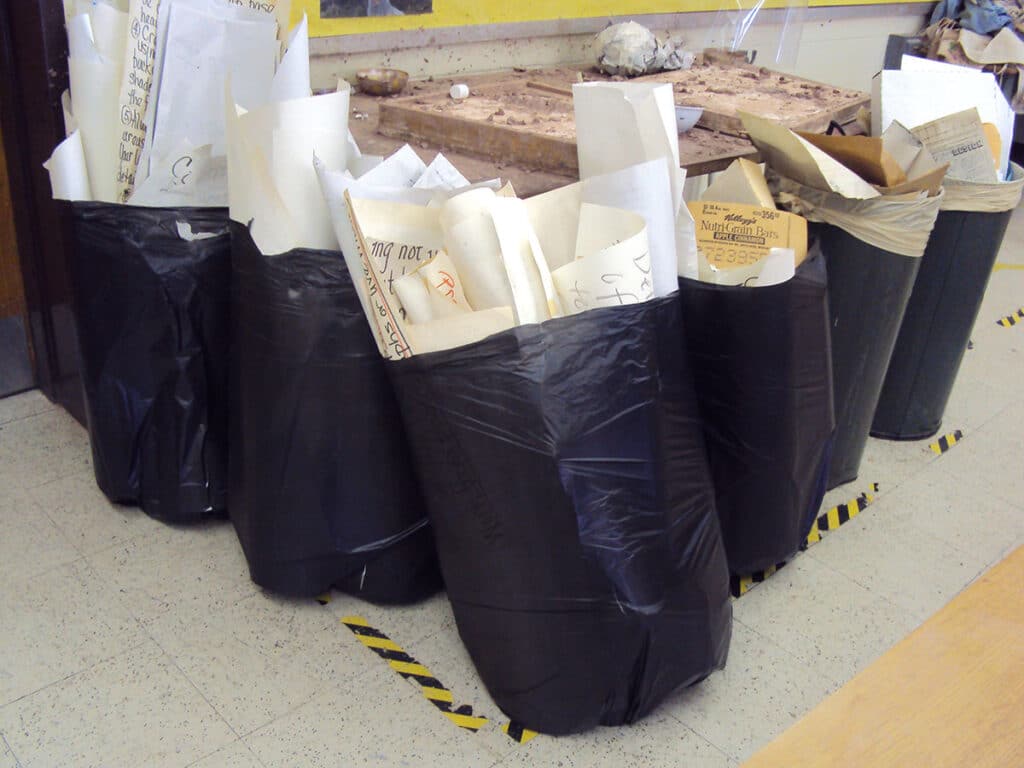
1. Will you use it this school year?
We often collect items because “one day we’ll use them.” Before you know it, you have an art closet of curiosities overflowing with weird things. Will you use the item this school year and does it fit in with the media, techniques, and concepts in your curriculum and scope and sequence? If not, it’s time to toss it or rehome it.
For example, you have a pile of large butcher paper that students painted on. You don’t want to toss it because it’s a lot of paper. If you know you have a paper mache unit next quarter, keep it to recover the tables. If you need a few extra messy mats, cut them up into individual sizes and laminate them.
On the other hand, if you find garbage bags of plastic drink bottles, and you know you won’t have time to clean them and do an upcycled sculpture project with them anytime soon, drop them in the recycle bin! If, one day, you decide to do an upcycled sculpture project, do another schoolwide collection and you’ll have a fresh stash of bottles in no time.
https://www.youtube.com/watch?v=7M70J1ae2Nk
2. Is it dirty?
If you can clean the item fairly quickly and easily, go for it! Say you found a bin of watercolor palettes where each cake is smeared with black paint. Grab a sponge and wipe them off; in a few minutes, they’ll look brand new! If the item has dirt, mold, bugs, or mouse feces—throw it away. The item is no longer sanitary and safe and is not worth salvaging.
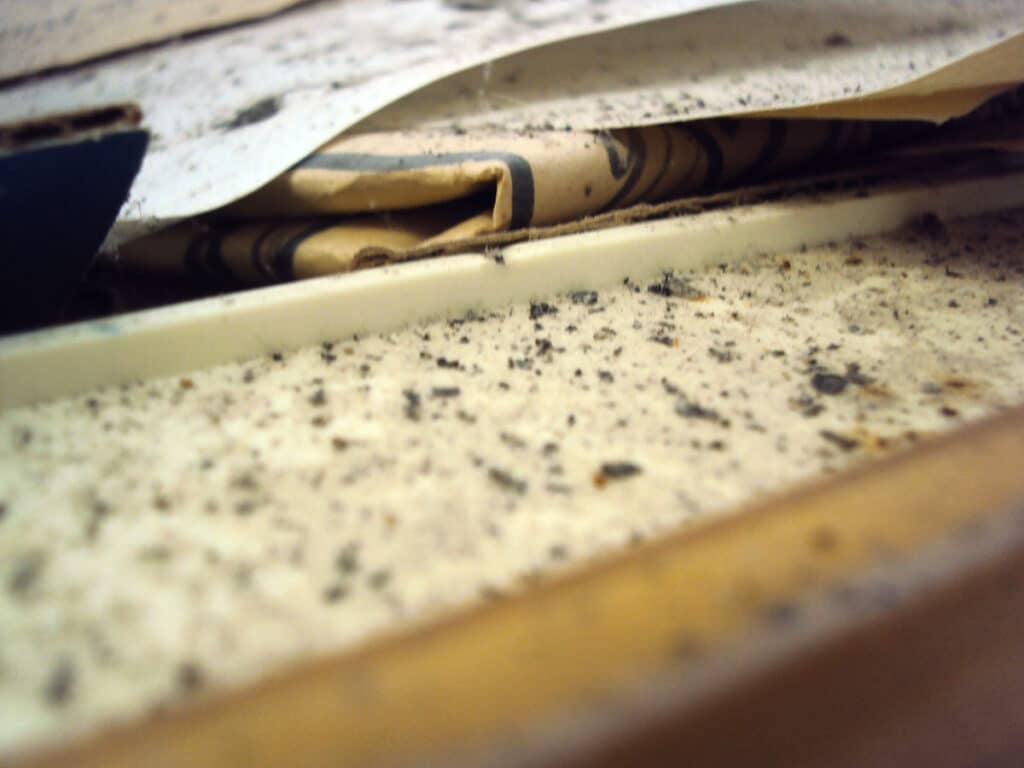
3. Is it district or school property?
Maybe you uncovered some archaic equipment in your closet, like an overhead projector or slide carousel. You have a stack of broken stools or textbooks from the 1970s. These may be district or school property. Check with your department chair, art supervisor, or school administrator to discover the proper channels and procedures for removal.
4. Is it hazardous?
Some art supplies or tools are no longer safe or recommended in schools. For example, you may unearth a set of oil paints and linseed oil or you may dig out a box of old-school super sharp metal compasses. Talk to your maintenance staff to dispose of these items properly or donate them to your local arts council for professional artists to use.
5. Can you digitize it?
Do you have drawers of hand-drawn anchor charts, old student artworks, or art history reproduction posters? What about filing cabinets chock-full of handwritten “dittos” or lesson plans generated on a typewriter? Determine if the content is still relevant. If you can use the artworks as exemplars for your projects, photograph them, and organize them digitally. Share those folders with fellow art teachers for them to use too! Sometimes, you find activity handouts that are gold—they just need to be digitally updated as well.
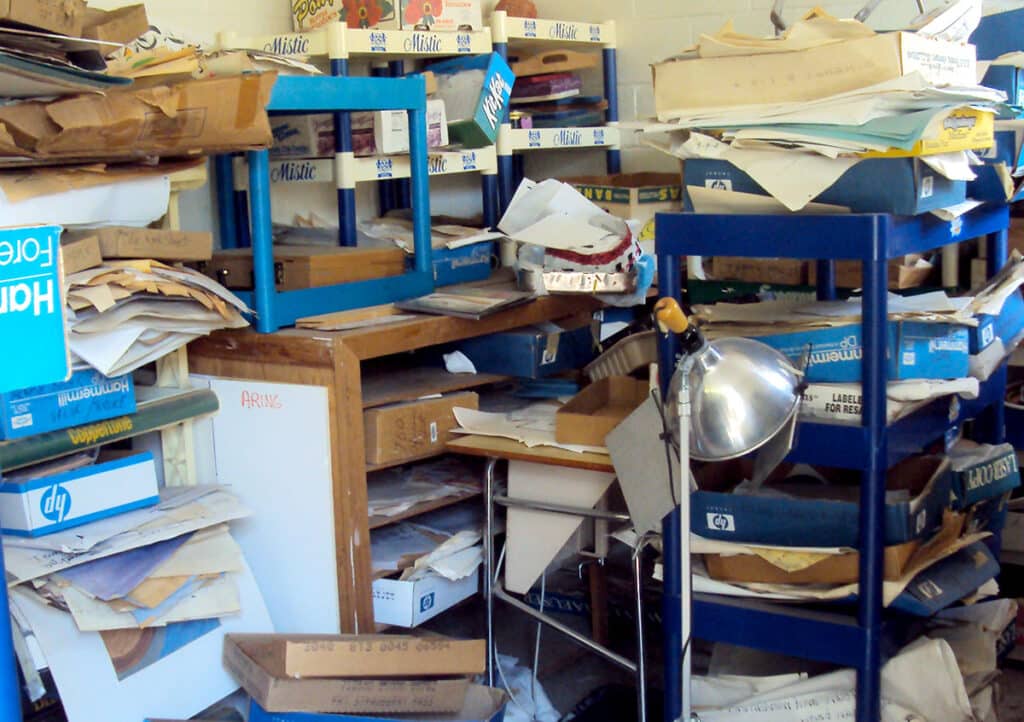
6. When was the last time you used it?
Maybe, the items you’re uncovering are things you’ve collected. Think back to the last time you touched it and used it. Was it recently? How often do you use it? Let’s say you have a giant box of pinecones for students to draw each fall. Instead, take your students outside for 10 minutes to collect their own still life items from nature. When you’re done with the unit, toss the items back out into the woods. Reuse your valuable closet space to store completed relief sculptures for your end-of-year art show.
7. Is it still functional?
Broken items tend to creep their way back into our storage spaces because “one day we’ll fix them.” Let’s be real—if you were going to fix them, you would have fixed them! Does the item still serve its intended purpose? Does the tablet turn on? Do you still have the power plug to the printer? Do you have all of the pieces for the loom? If you don’t have the time or funds to fix the item before the end of the quarter, give yourself permission to move on.
However, you can save some items with minimal effort and money! Clay is expensive and it’s usually worth it to rehydrate a block of dried clay. You can also save really nice paintbrushes by soaking them in a solution to remove dried acrylic paint.
https://www.youtube.com/watch?v=bCZdZ0simOs
8. Do you have duplicates?
Sometimes we get it into our minds that we need to have a whole class set of each item or supply. You can end up with a huge hoard of tools that you don’t regularly use! For instance, you may have 30-40 brayers taking up two bins in your closet. However, you may only use 10 because you usually do printmaking in small groups or stations. Think about how you teach and the flow of your studio and consider gifting spares to another art teacher. You can always borrow them back if needed!
Decluttering your art room isn’t just about tossing old art supplies—it’s about making an inspiring space that fuels creativity and efficiency. By applying these eight guiding questions, you’re reclaiming control over your classroom. Every decision, from determining whether an item fits into your current curriculum, to deciding if it’s worth repurposing or donating, brings you one step closer to a space that truly works for you and brings you freedom.
What guiding questions would you add to this list?
Are you an art teacher who tosses or keeps?
To chat about decluttering with other art teachers, join us in The Art of Ed Community!
Magazine articles and podcasts are opinions of professional education contributors and do not necessarily represent the position of the Art of Education University (AOEU) or its academic offerings. Contributors use terms in the way they are most often talked about in the scope of their educational experiences.
